
Maine-et-Loire is a department in the Loire Valley in the Pays de la Loire region in Western France. It is named after the two rivers, Maine and the Loire. It borders Mayenne and Sarthe to the north, Loire-Atlantique to the west, Indre-et-Loire to the east, Vienne and Deux-Sèvres to the south, Vendée to the south-west, and Ille-et-Vilaine to the north-west. It also borders Ille-et-Vilaine in the north for just 20 yards (19 m), France's shortest department boundary. Its prefecture is Angers; its subprefectures are Cholet, Saumur and Segré-en-Anjou Bleu. Maine-et-Loire had a population of 818,273 in 2019.

Evergreen Park is a village in Cook County, Illinois, United States. In 2020, the population was 19,943.
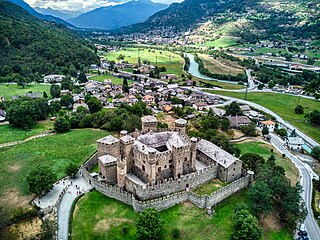
The Aosta Valley is a mountainous autonomous region in northwestern Italy. It is bordered by Auvergne-Rhône-Alpes, France, to the west, Valais, Switzerland, to the north, and by Piedmont, Italy, to the south and east. The regional capital is Aosta.
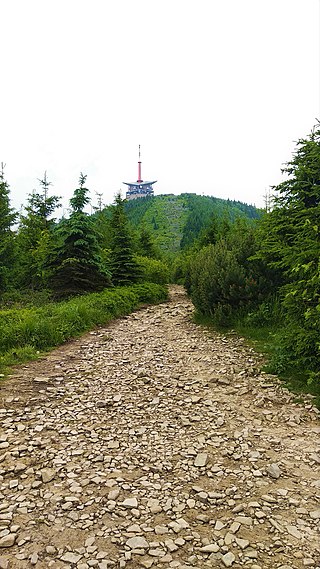
The Moravian-Silesian Region is one of the 14 administrative regions of the Czech Republic. Before May 2001, it was called the Ostrava Region. The region is located in the north-eastern part of its historical region of Moravia and in most of the Czech part of the historical region of Silesia. The region borders the Olomouc Region to the west and the Zlín Region to the south. It also borders two other countries – Poland to the north and Slovakia to the east.
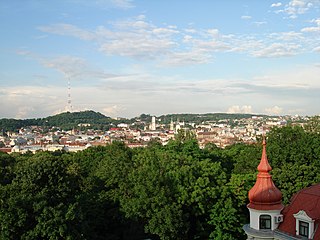
Lviv Oblast, also referred to as Lvivshchyna, is an oblast in western Ukraine. The capital of the oblast is the city of Lviv. The current population is 2,478,133.

The province of Teramo is a province in the Abruzzo region of Italy. Its capital is the city of Teramo. The province has an area of 1,948 square kilometres (752 sq mi), a population of 313,029 (2012), and is subdivided into 47 comuni, see comunes of the province of Teramo. The province of Teramo shares its northern border with the province of Ascoli Piceno in the Marche region, southern and southwestern borders with the province of L'Aquila in the Abruzzo region, and a western border with the province of Rieti in the Lazio region. To the south is the province of Pescara in the Abruzzo region and to the east is the Adriatic Sea.
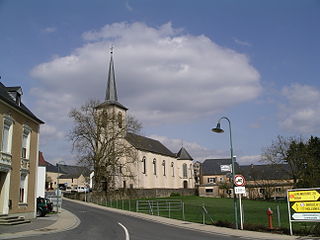
Tuntange is a small town in western Luxembourg, in the canton of Mersch.

Montsoreau is a commune of the Loire Valley in the Maine-et-Loire department in western France on the Loire, 160 km (99 mi) from the Atlantic coast and 250 km (160 mi) from Paris. The village is listed among The Most Beautiful Villages of France and is part of the Loire Valley UNESCO World Heritage Site.
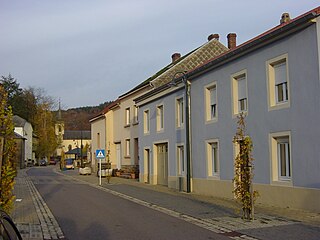
Born is a village on the River Sauer in the commune of Mompach, in eastern Luxembourg. It lies on the N10, 14 km (9 mi) south of Echternach and 8 km (5 mi) north of Wasserbillig. Only a 5 minute drive from the E44 motorway from Luxembourg City to Trier, it is popular with tourists and day-trippers who walk, cycle or fish along the banks of the river.
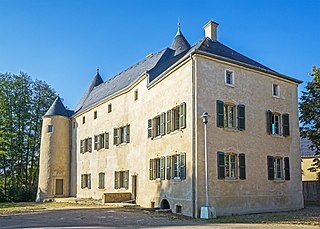
Aspelt is a small town in the commune of Frisange, in southern Luxembourg. In 2024, its population was 1710.
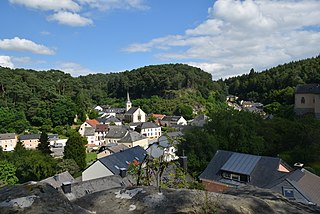
Bourglinster is a small town in the commune of Junglinster, in central Luxembourg. As of 2024, the town has a population of 776.

Hollenfels is a village in the commune of Helperknapp, in western Luxembourg. As of 2024, the village has a population of 539.

The Valley of the Seven Castles is an informal name given to the Äischdall, the valley of the Eisch river, in central Luxembourg. The valley stretches from the confluence with the Alzette upstream to Steinfort, on the border with Belgium. The entire route can be traversed in about an hour by car, starting near the town of Arlon on the Belgian/Luxembourg border. There is also a 37-kilometre footpath that takes hikers along the valley and past the castles.

The Château de Chalmazel, or Château des Talaru is a castle situated in the commune of Chalmazel, in the Loire département of France. It is located in the Haut-Forez, between the towns of Saint-Étienne and Thiers. Its name in medieval times was Saint-Jehan-des-Neiges. The castle dominates the valley of the Lignon and it was built to be an impregnable fortress on the instructions of the Count of Forez.

The Codex Mariendalenis is a manuscript on vellum containing the epic poem Yolanda vu Veianen or Yolanda of Vianden. It is believed to be the work of Brother Hermann von Veldenz who probably wrote the story of Yolanda's life in 1290 after her death in 1283. The work consists of 5,963 lines of rhyming couplets in Moselle Franconian which bears close similarities to today's Luxembourgish. It is therefore of particular interest to those tracing the history of the Luxembourgish language.
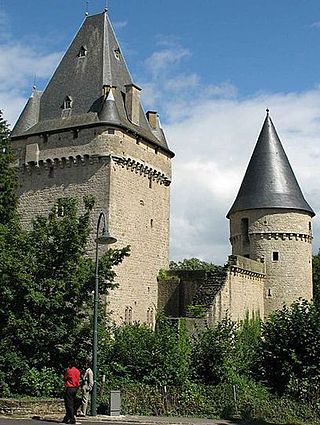
Hollenfels Castle, with a history dating back to the 11th century, is one of the castles located close to the River Eisch in the Valley of the Seven Castles in central Luxembourg. Today it is used as a centre for activities for young people, including a nearby youth hostel.

Schoenfels Castle, with a history dating back to the 12th century, is one of the castles belonging to the Valley of the Seven Castles in central Luxembourg. Located in the village of Schoenfels in the Mamer Valley between Kopstal and Mersch, it now belongs to the State of Luxembourg.

Mersch Castle in central Luxembourg is one of the castles belonging to the Valley of the Seven Castles. Located in the centre of Mersch, its history goes back to the 13th century. Today the castle houses the administrative offices of the local commune.

The New Castle of Ansembourg, in central Luxembourg is one of the castles belonging to the Valley of the Seven Castles. Located about one kilometre or just over half a mile below the Old Castle of Ansembourg, it was built by the industrialist Thomas Bidart in 1639.
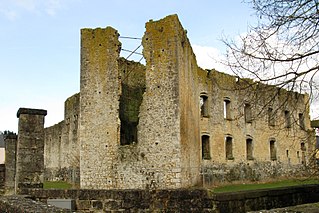
Koerich Castle is a ruin located in the village of Koerich in central Luxembourg. With a history dating back to the 12th century, it is one of the castles in the Valley of the Seven Castles.




















